Unusual fruits that can be grown in New Hampshire
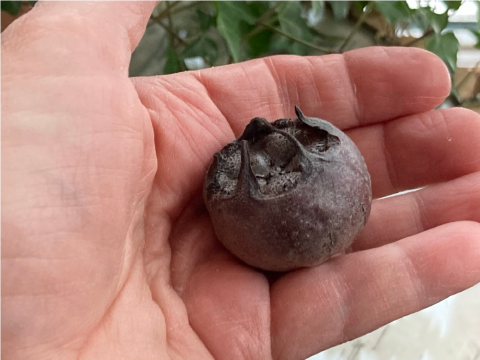
Are you looking to grow something different in your landscape this season that is not only beautiful but also edible? There are a few uncommon fruits that are great for both people and wildlife that can be grown in New Hampshire.
Small to Medium Size Trees
Mulberry - delicious fruit that tastes like a raspberry dipped in honey
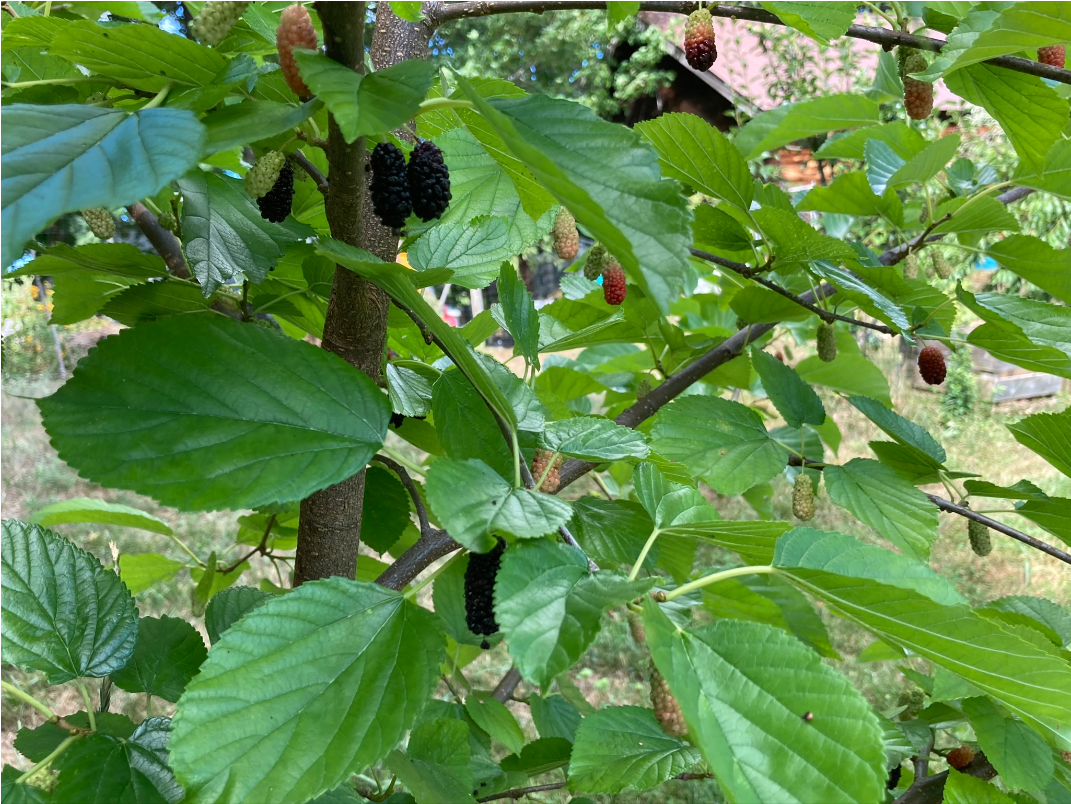
- It’s fast growing and easy to cultivate.
- Fruits ripen over a long period of time, from late July through September.
- Red mulberry (Morus rubra) is native to the eastern half of the North America. White mulberry (Morus alba) was brought to the United States from China as a food source for silkworm caterpillars in the silk industry. This species is considered invasive in some states and it can become weedy.
- Fruit can be very messy and stain pavement, vehicles and wooden decking.
Pawpaw – tropical looking fruit that tastes like a cross between a banana and mango custard
- Native to the southeastern United States and hardy to zone 5.
- Look for early ripening varieties like ‘Allegheny’, ‘Summer Delight’, and ‘Pennsylvania Golden’.
- An understory tree in the wild that can grow in full sun to mostly shade.
‘Meader’ American Persimmon - the only persimmon that is self-fertile, which means it will produce fruit even if flowers are not pollinated
- Developed by internationally renowned plant breeder, Elwyn Meader, of the University of New Hampshire. During his lifetime, Meader developed over 60 varieties of plants that we have in gardens today, including the popular ‘Miss Kim’ Lilac.
- Its beautiful orange fruit may persist into winter.
- Persimmons ripen after frost.
- Cold hardy to zone 4, which makes it suitable for cultivation in most of New Hampshire.
Medlar - old-fashioned European fruit that looks like large rose hips
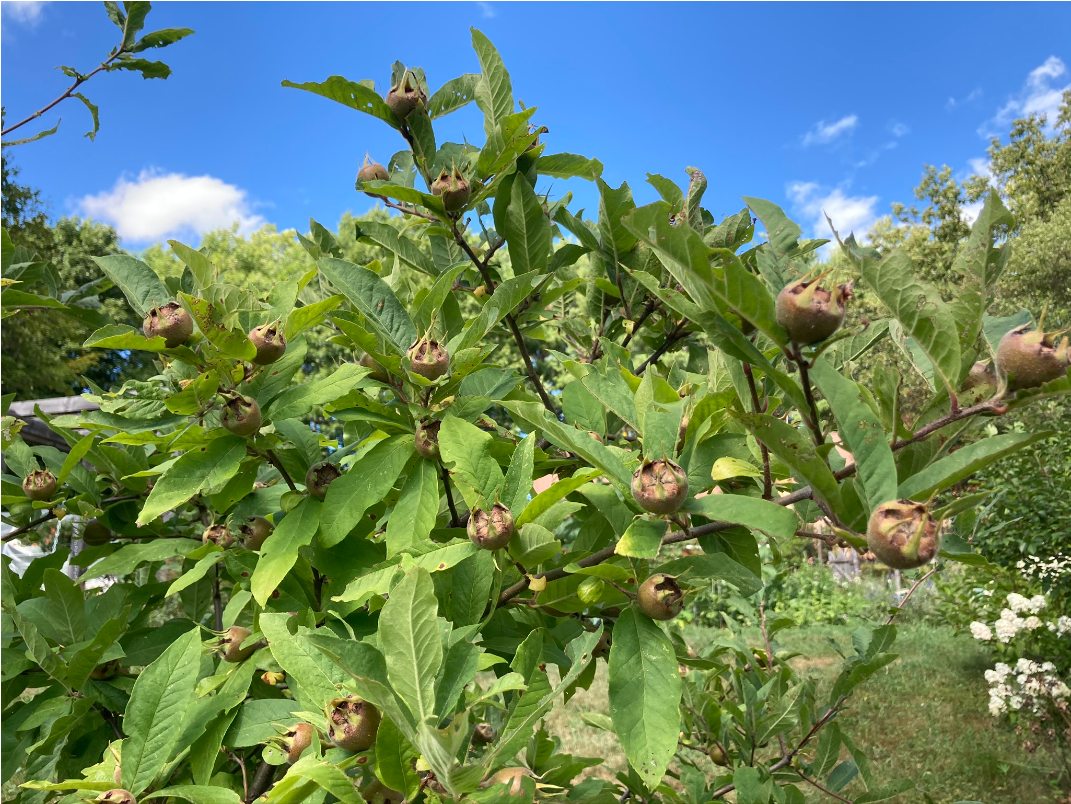
- Fruit has the consistency of apple butter and its flavor is a cross between apple and cranberry.
- Produces beautiful pure white blossoms in spring.
- Fruit are ripe when soft, often after a light frost.
- Cold hardy to zone 5, making it suitable for production in parts of southern New Hampshire.
Quince –an old-world that that produces large yellow fruit that are too astringent to eat raw, but have been described as “fruit of the gods” when cooked
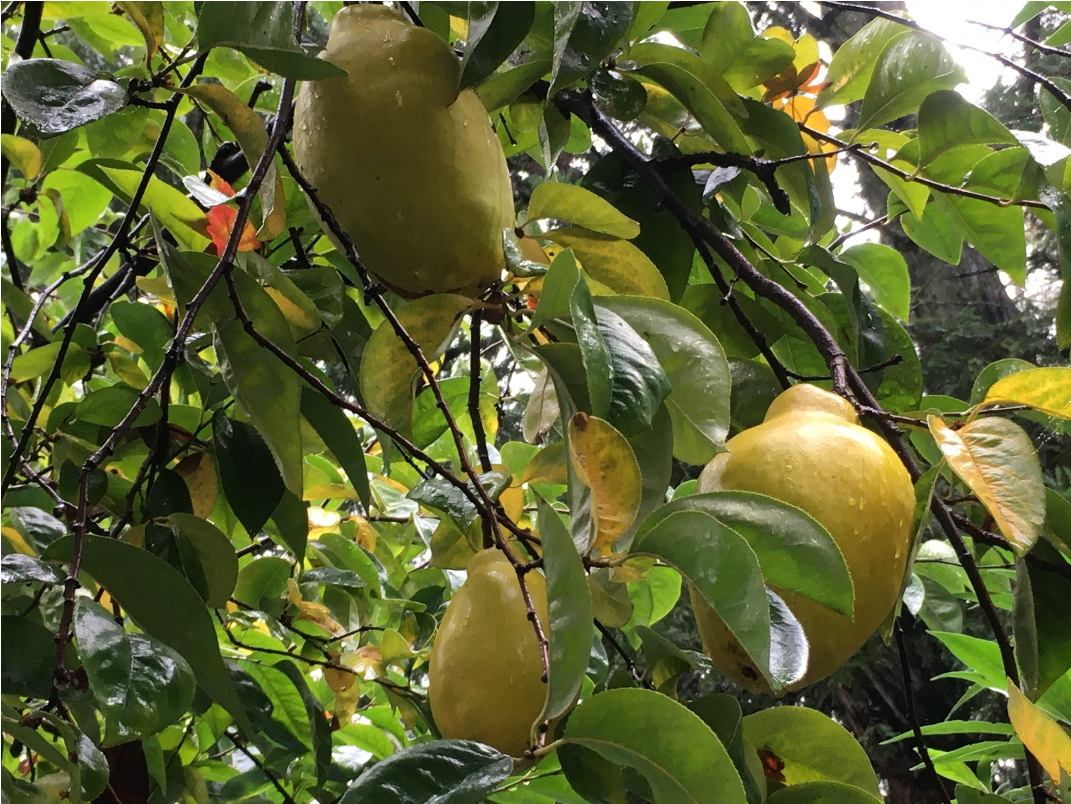
- Quince (Cydonia oblonga) is a different species than flowering quince (Chaenomeles speciosa), which is grown as an ornamental shrub. Flowering quince also produces edible fruit that are small and bitter unless cooked.
- Plants sucker profusely and will spread to form a thicket unless regularly pruned.
Redfield Apple (also known as Geneva crabapple) - small fruit is red on the inside and outside

- Great to cook with and makes beautiful dark pink apple sauce.
- Ripens late in the season.
Cornelian Cherry – a species of dogwood that is one of the first tree to blossom in the spring with bright yellow clusters of flowers

- Dark, sour, red cherry-like fruits ripen in September.
- Fruits can be eaten raw, but they are better for making syrups and preserves.
- Native to Western Asia and Europe.
Vines
Hardy Kiwi and UNH bred "Kiwiberries"– smooth-skinned, small kiwi fruits
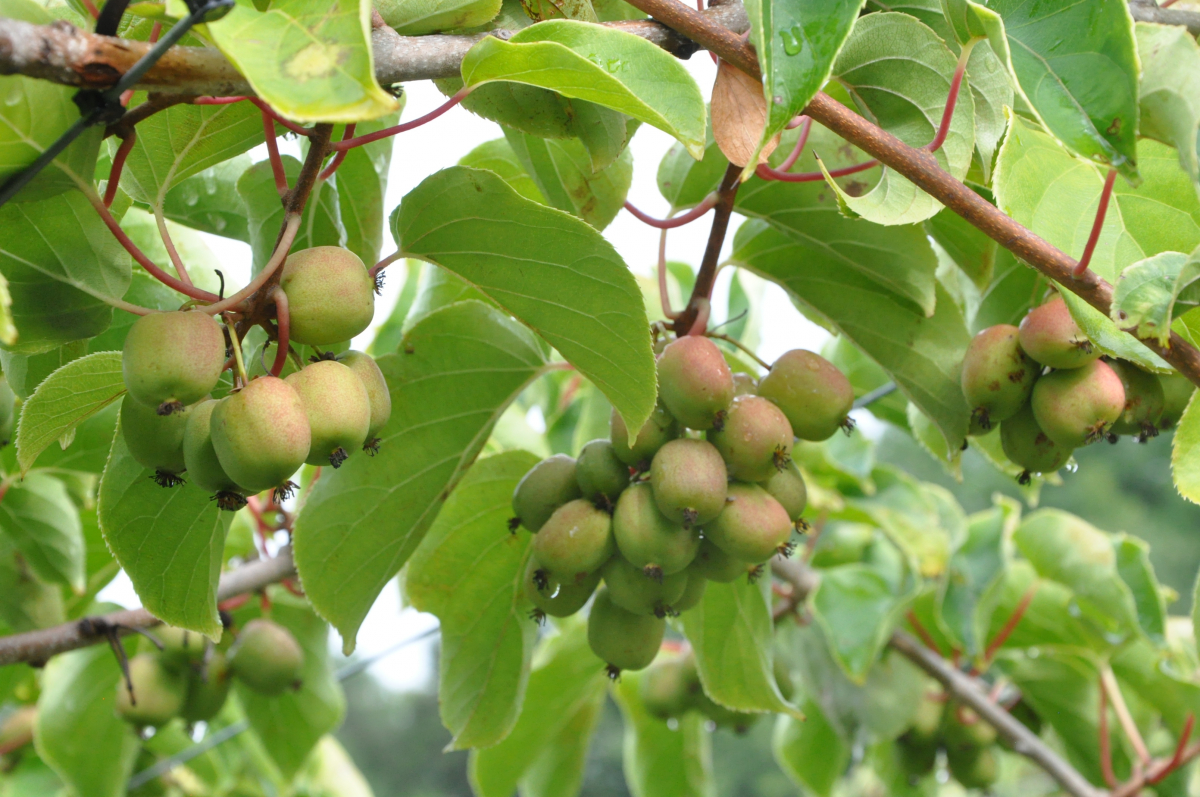
- Fruits are the size of large grapes.
- Vines are aggressive and require heavy pruning and a sturdy trellis system.
- Plants are either male or female. A male vine is needed for fruit to set on female vines.
- UNH has the only national breeding program that is developing varieties of kiwiberries for commercial production and for backyard growers - available now through Harttman's Plant Company.
Explore the hardy kiwiberry production guide from the New Hampshire Agricultural Experiment Station.
Ground covers
Cranberry – beautiful semi-evergreen groundcover that is native to New Hampshire
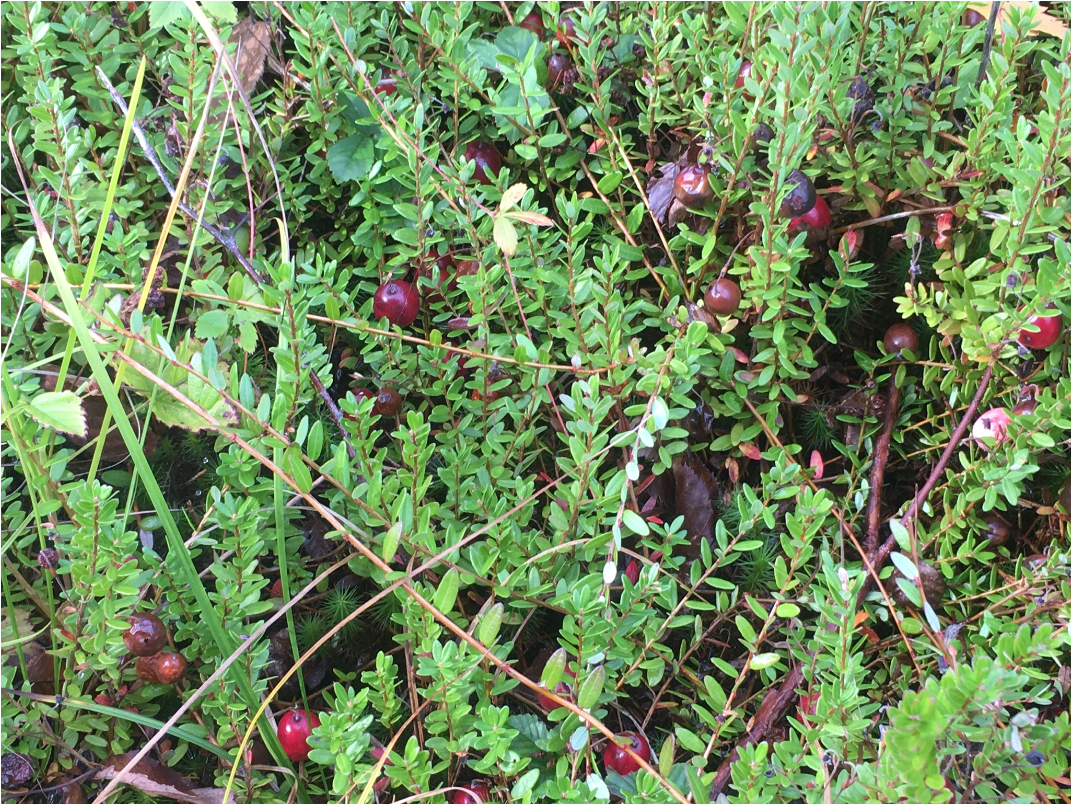
- Fruit can be used for sauce and baking, or used to decorate Christmas trees.
- Vines prefer damp to boggy, acidic, organically rich soil.
- Can be grown as a groundcover near other acid-loving plants like swamp azalea or highbush blueberry.
Lingonberry (also called mountain cranberry) - grows at high elevations on mountainsides in New Hampshire
- Fruits are smaller than that of cranberries.
- Beautiful foliage is semi-evergreen.
- Edible tart fruit can be used as a substitute for traditional cranberries. Commercially cultivated in northern Europe.
Shrubs
Honeyberry (also called haskap) – is a honeysuckle species that produces one of the earliest ripening fruits, in early to mid-June, even before strawberries
- Fruit looks like an elongated blueberry fruit.
- Tastes like a cross between a blueberry and a raspberry.
- Native to boreal forests in northern Asia, Europe and North America.
- Grows best in organically rich, moist but well-drained soils in full sun to part shade.
Jan, Joel, and Joy Bush Cherries - hybrid cherry plants that produce tart cherries similar to Montmorency
- Varieties developed by UNH Plant Breeder, Elwyn Meader.
- Shrubs grow four feet tall by 3 feet wide and can fit into small spaces.
- Pink flowers in the spring are highly ornamental.
- Fruits ripen in late August.
- The romance series is similar to the Meader series, and includes ‘Carmine Jewel’, ‘Romeo’, and ‘Juliet.’ These plant grows a little larger and are also excellent.
Beach Plum – beautiful, delicious, blue purple, grape-sized fruit
- Grows best in poor sandy soil. In the wild beach plums grow in sand dunes near the ocean.
- Fruit ripens in September and can be eaten fresh or turned into preserves.
- Grows to between 8 and 10 feet tall.
Elderberry - Lacy, white flowers are followed by edible black berries have many uses. Caution: RAW ELDERBERRIES ARE POISONOUS. (The seeds, stem and leaves are even poisonous to livestock) Once cooked the heat breaks down the glycosides and making them edible and delicious.
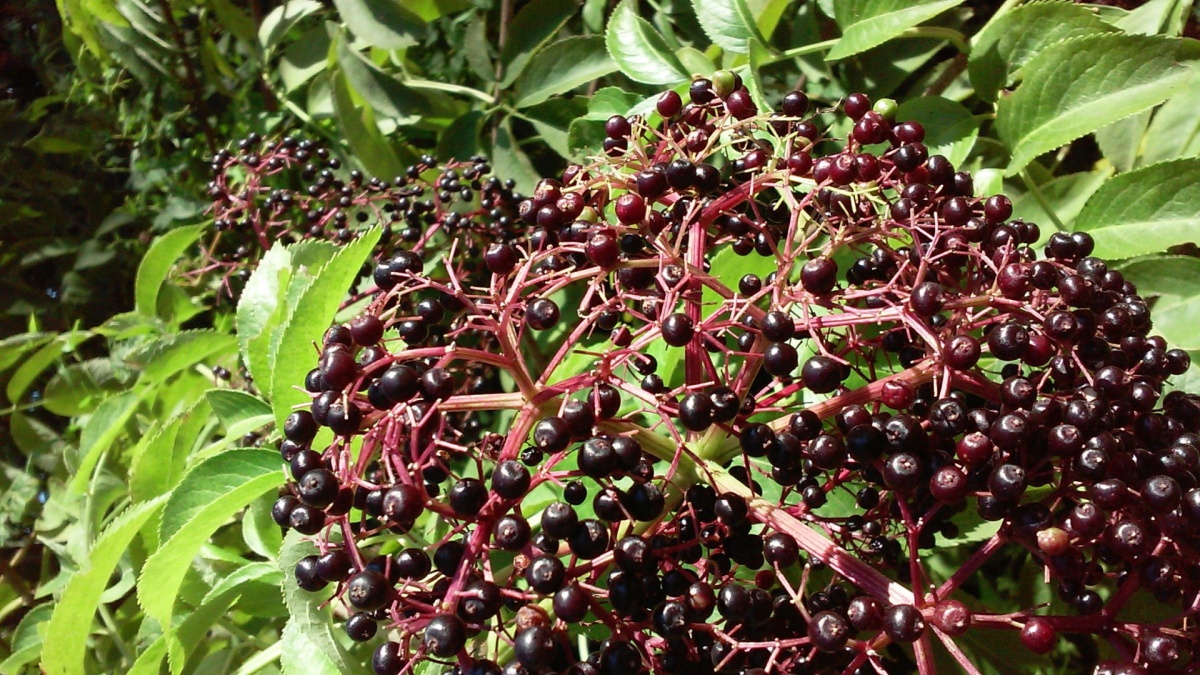
- Berries must be cooked to be safe to eat. Often used for jams, pies and wine. Can be dipped in batter and fried into fritters.
- Elderberry flowers are edible too. They are frequently included in tinctures and syrups.
- Grows very well in moist, fertile soil, but easy to grow most anywhere.
- Native plant grows to 10'.
Learn more about growing elderberries.
Hazelnut (also known as filbert) - native, beautiful shrub with nice fall color.
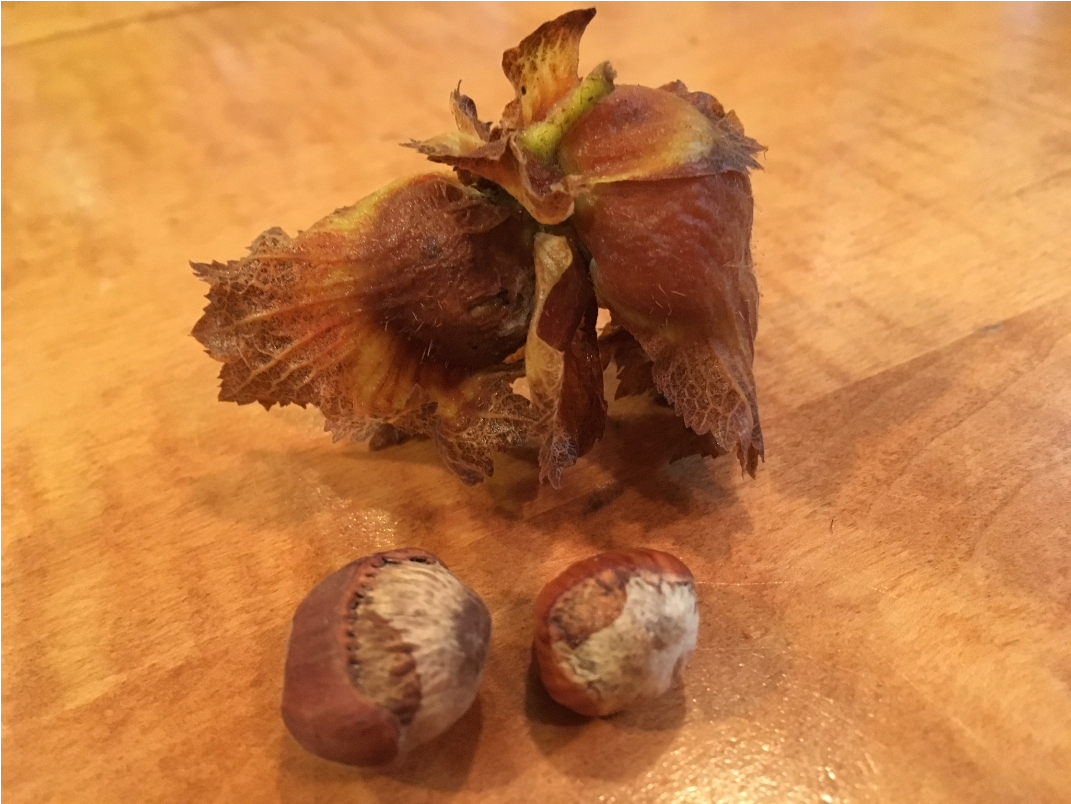
- Flowers appear in spring in showy catkins.
- Its edible nuts grow within husk-like bracts.
- It’s a preferred food for squirrels and other wildlife.
- Multi-stemmed shrub that grows 8-16 feet tall.
Where to place your orders for some of these unusual fruits
While not an exhaustive list, these nurseries all carry some of the unusual fruits featured in this guide.
NH State Forest Nursery, Boscawen, NH
Fedco, Maine
Elmore Roots, VT
Broken Arrow, Ct
One Green World, OR
Honeyberry USA, MN
Do you love learning about stuff like this?
SUBSCRIBE TO GRANITE STATE GARDENING
A monthly newsletter for New Hampshire gardeners, homesteaders and plant-lovers of all kinds, that includes seasonal suggested gardening tips, upcoming events and articles with proven solutions for your garden and landscape.
Got questions? The Ask UNH Extension Infoline offers practical help finding answers for your home, yard, and garden questions. Call toll free at 1-877-398-4769, Monday to Friday, 9 a.m. to 2 p.m., or e-mail us at answers@unh.edu.

